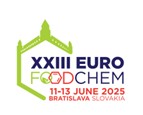Vedecký časopis - archív
Journal of Food and Nutrition Research
Súhrny čísla 3 / 2015
Šaková, N. – Sádecká, J. – Lejková, J. – Puškárová, A. – Koreňová, J. – Kolek, E. – Valík, Ľ. – Kuchta, T. – Pangallo, D.
Characterization of May bryndza cheese from various regions in Slovakia based on microbiological, molecular and principal volatile odorants examination
Journal of Food and Nutrition Research, 54, 2015, č. 3, s. 239-251
Tomáš Kuchta, Food Research Institute, National Agricultural and Food Centre, Priemyselná 4, P. O. Box 25, 824 75 Bratislava 26, Slovakia. E-mail: kuchta@vup.sk
Received 29 January 2015; revised 12 March 2015; accepted 18 March 2015, published online 16 April 2015.
Súhrn: May bryndza cheese, a type of Slovakian bryndza cheese with a status of Protected Geographical Indication (PGI), produced from raw ewes’ milk, was characterized in one season in 7 specialized factories regarding the diversity of bacteria, yeasts and fungi, and regarding aroma-active volatile compounds. The culture-based microbiological analysis showed that all samples contained high numbers of lactococci, lactobacilli and Galactomyces/Geotrichum. Polymerase chain reaction-based identification classified most of lactobacilli as Lactobacillus paracasei and Lb. plantarum, and most of lactococci as Lactococcus lactis. Culture-independent analysis revealed that the most abundant bacteria were Lactococcus spp. followed by Streptococcus spp. and Leuconostoc spp. The eukaryotic microflora was composed mainly of Galactomyces/Geotrichum, and yeasts Yarrowia lipolytica, Kluyveromyces lactis and Debaryomyces hansenii. Regarding aroma-active volatiles, 28 compounds were detected by gas chromatography-olfactometry with acetic acid, ethyl acetate, 2-methyl-1-propanol, 3-methyl-1-butanol, 2-methyl-1-butanol, 2,3-heptanedione, pentanoic acid and 2,4-dimethyl-1-heptene being present in all samples. Other widely detected compounds were decanoic acid, 3-methylbutanal, butanoic acid, heptanoic acid, tentatively identified 4-octanone, tentatively identified 2,4-dimethyl undecane and tentatively identified 1-dodecanol. The results showed that microbial diversity and principal aroma-active compounds did not markedly differ among individual producers from different geographic regions, which was positive in terms of PGI definition of this cheese.
Kľúčové slová: ewes’ cheese; bryndza; microbial diversity; aroma-active volatiles
Na stiahnutie:
jfnr20153p_5.pdf (PDF, 155.42 Kb, 3118x)










